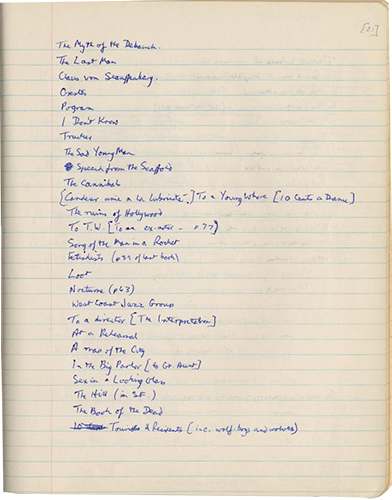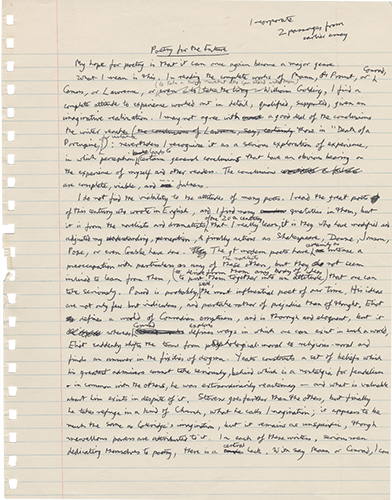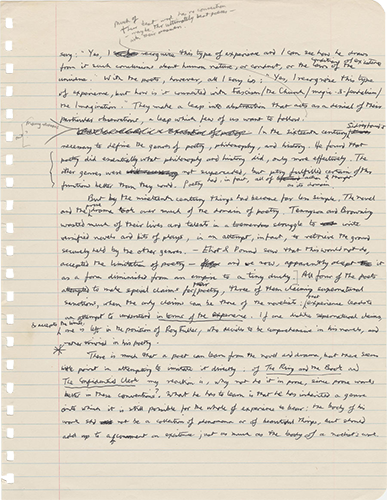"Misanthropos"
Genesis of Poem
"A courier after identity, and sees
a pattern grow among the disarray"
Notebook entries, November 23, 1957
By the date of these entries, Gunn had published his second book, The Sense of Movement (1957). Gunn expresses the desire to start anew, to produce a different set of poems. He reflects on his writing— lessons learned and problems to avoid. The difficulty of producing duplicates of previously written poems, which Gunn describes, "is one not only of subject but of style too: a different style will produce different poems, and there must be a different style for the new subjects."

Notebook entry, February 1958
In these notebook entries, Gunn wrestles with what Weiner characterizes as the "problem for modern poets": "to draw from their observations a plausible and persuasive interpretation of life" (At the Barriers, p. 107). Gunn expresses his "hope for poetry . . . that it can once again become a major genre." He further asserts that he learns most from the novelists and dramatists of the twentieth century and not modern poets--Pound, Eliot, Yeats, and Stevens—"in each of these writers, serious men dedicating themselves to poetry, there is a central lack."

"Poetry for the Future"
Notebook entries, May 2, 1963
In these notebook entries, Gunn wrestles with what Weiner characterizes as the "problem for modern poets": "to draw from their observations a plausible and persuasive interpretation of life" (At the Barriers, p. 107). Gunn expresses his "hope for poetry . . . that it can once again become a major genre." He further asserts that he learns most from the novelists and dramatists of the twentieth century and not modern poets--Pound, Eliot, Yeats, and Stevens—"in each of these writers, serious men dedicating themselves to poetry, there is a central lack."



